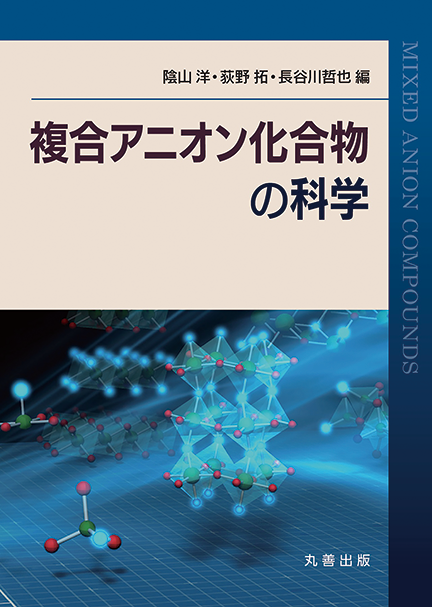Disclaimer: machine translated by DeepL which may contain errors.
Science of Complex Anionic Compounds
Tetsuya Hasegawa, Professor, Department of Chemistry

| Edited by Hiroshi Kageyama, Taku Ogino and Tetsuya Hasegawa |
| Science of Complex Anionic Compounds |
| Maruzen Publishing (2021) |
| isbn 978-4-621-30610-9 |
You may have many opportunities to see inorganic functional materials such as ceramics. In most cases, the cations (cations) are composed of multiple elements, but the anions (anions) are mostly of one type (oxide ions O2-, nitride ions N3-, etc. ). In contrast, substances containing multiple anions are called compound anion compounds. Although these compounds are still in the developmental stage due in part to the fact that synthetic methods have not yet been fully established , their unique functions are attracting attention. For example, oxynitrides containing both O2- and N3- have the ability to absorb visible light and decompose water, and compounds containing O2- and H- ( hydride) are expected to be used in batteries because H- moves at high speed.
This book, "Science of Complex Anionic Compounds," summarizes the current status of anionic compounds from the basics to applications. However, this book is not a collection of the latest research results, but rather a textbook for those who wish to learn about compound anion compounds from scratch. The contents of the book are as follows: Chapter 1 describes the chemical characteristics of complex anion compounds. This is followed by chapters on synthesis techniques, structural characterization techniques, functions and applications, and theoretical calculations, in which the above-mentioned chemical features are repeatedly cited to keep the reader aware of how complex anions are different from other substances. It is hoped that this book will raise awareness of complex anion compounds and lead to further developments.
Published in Faculty of Science News, July 2021


